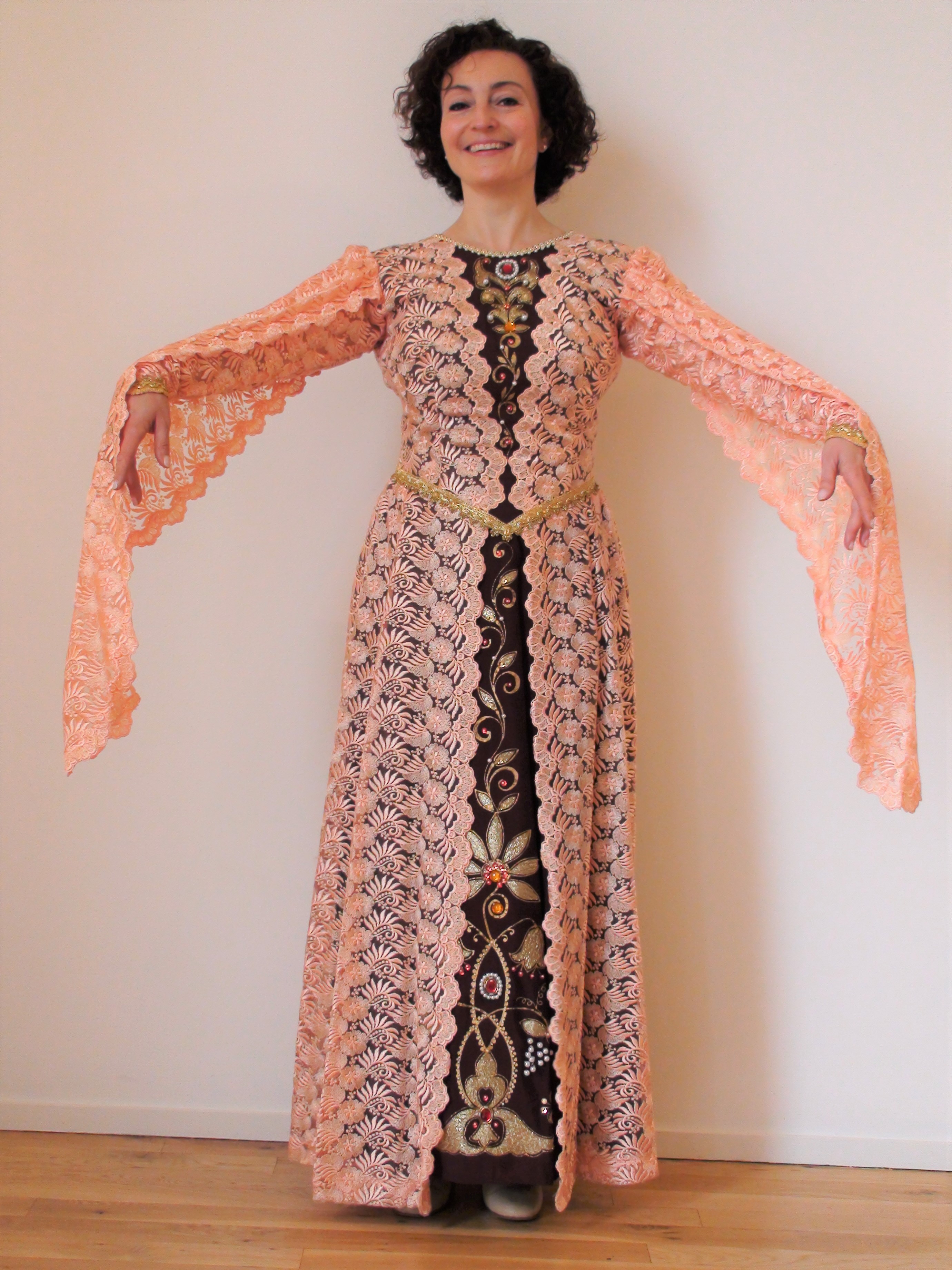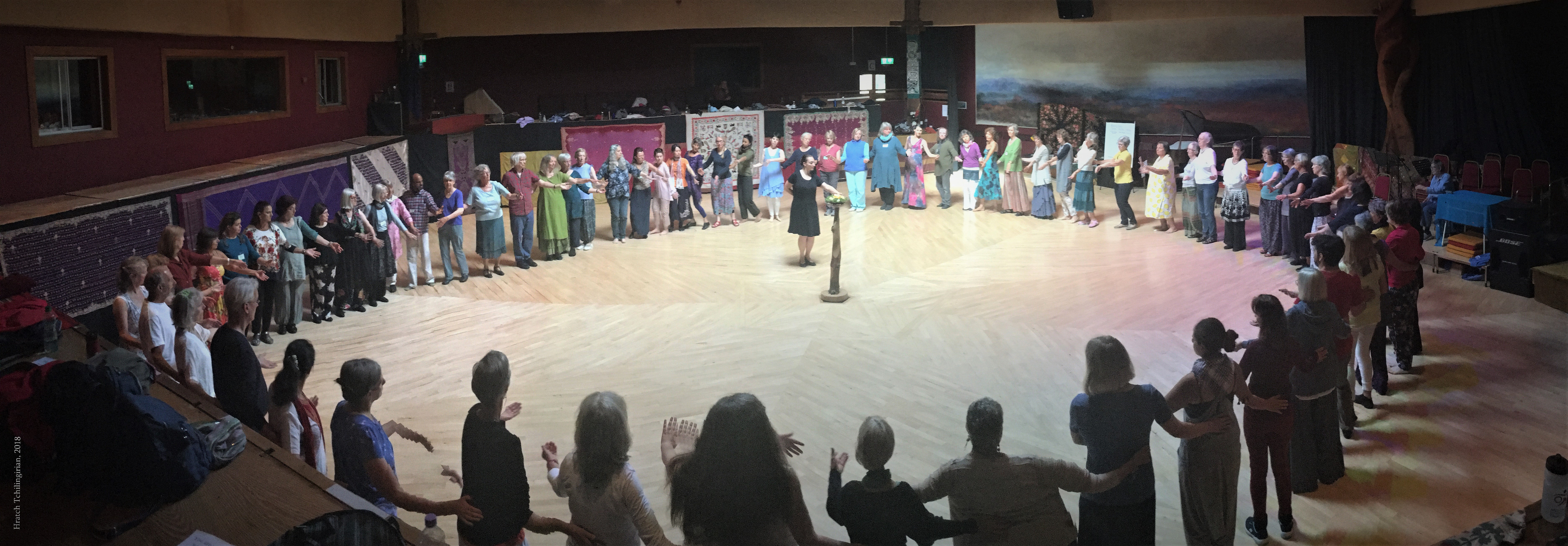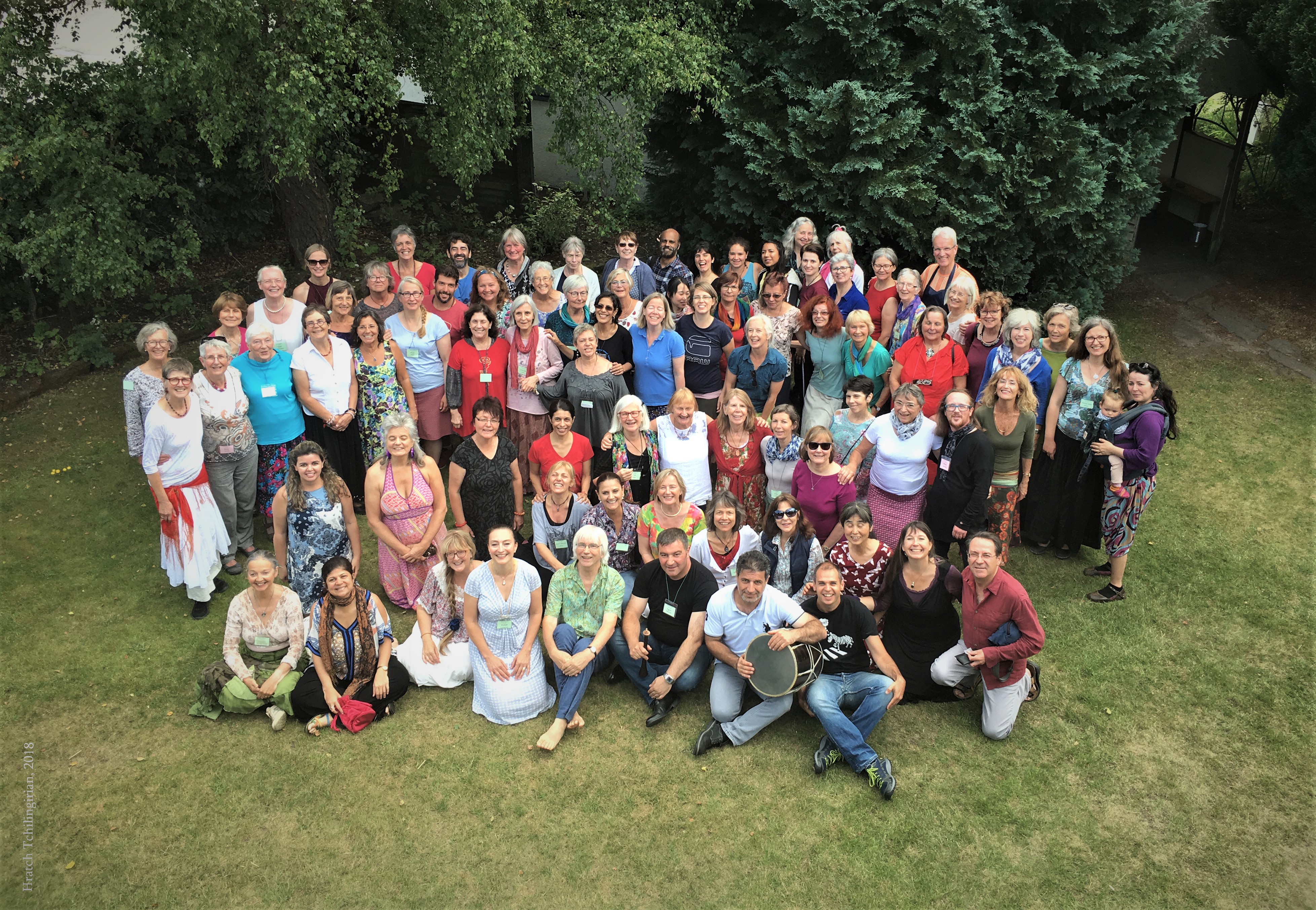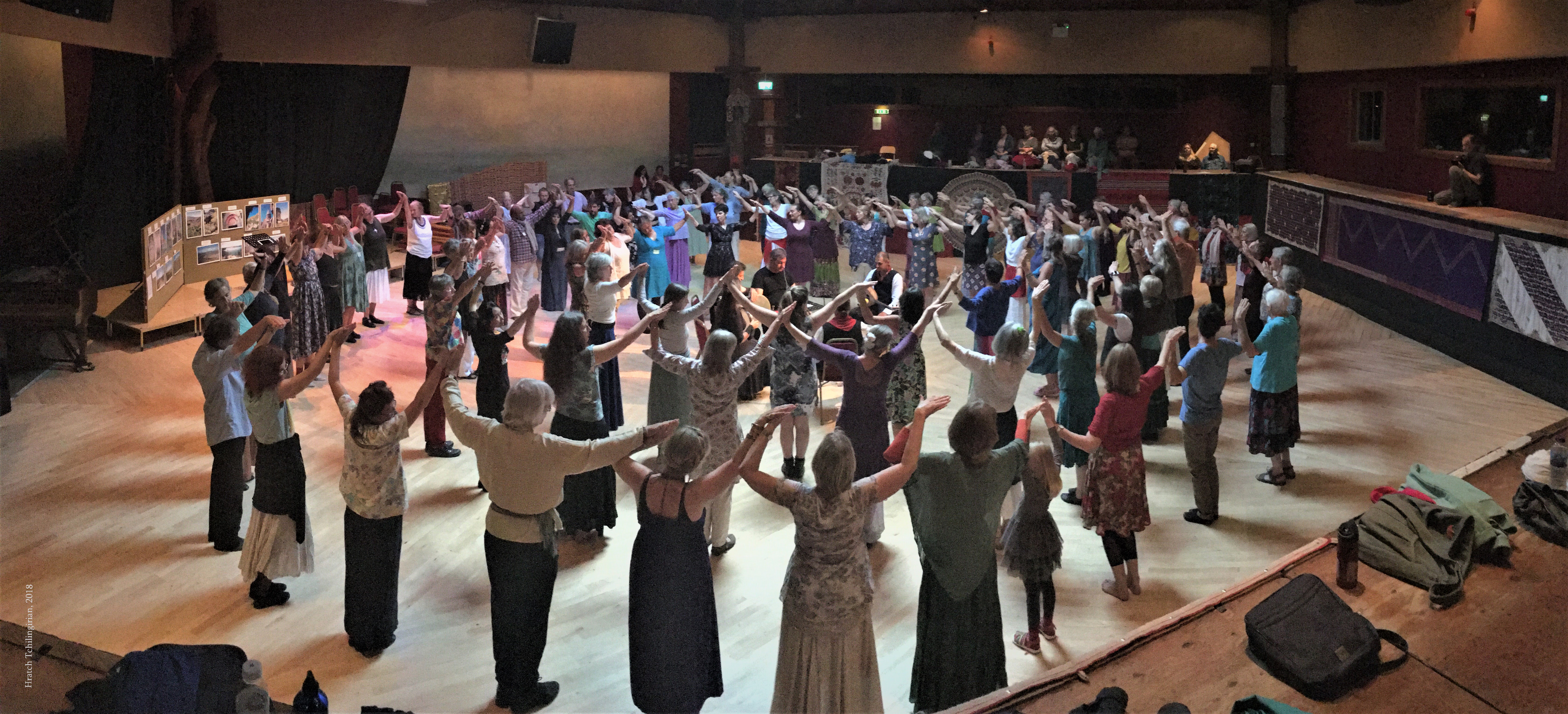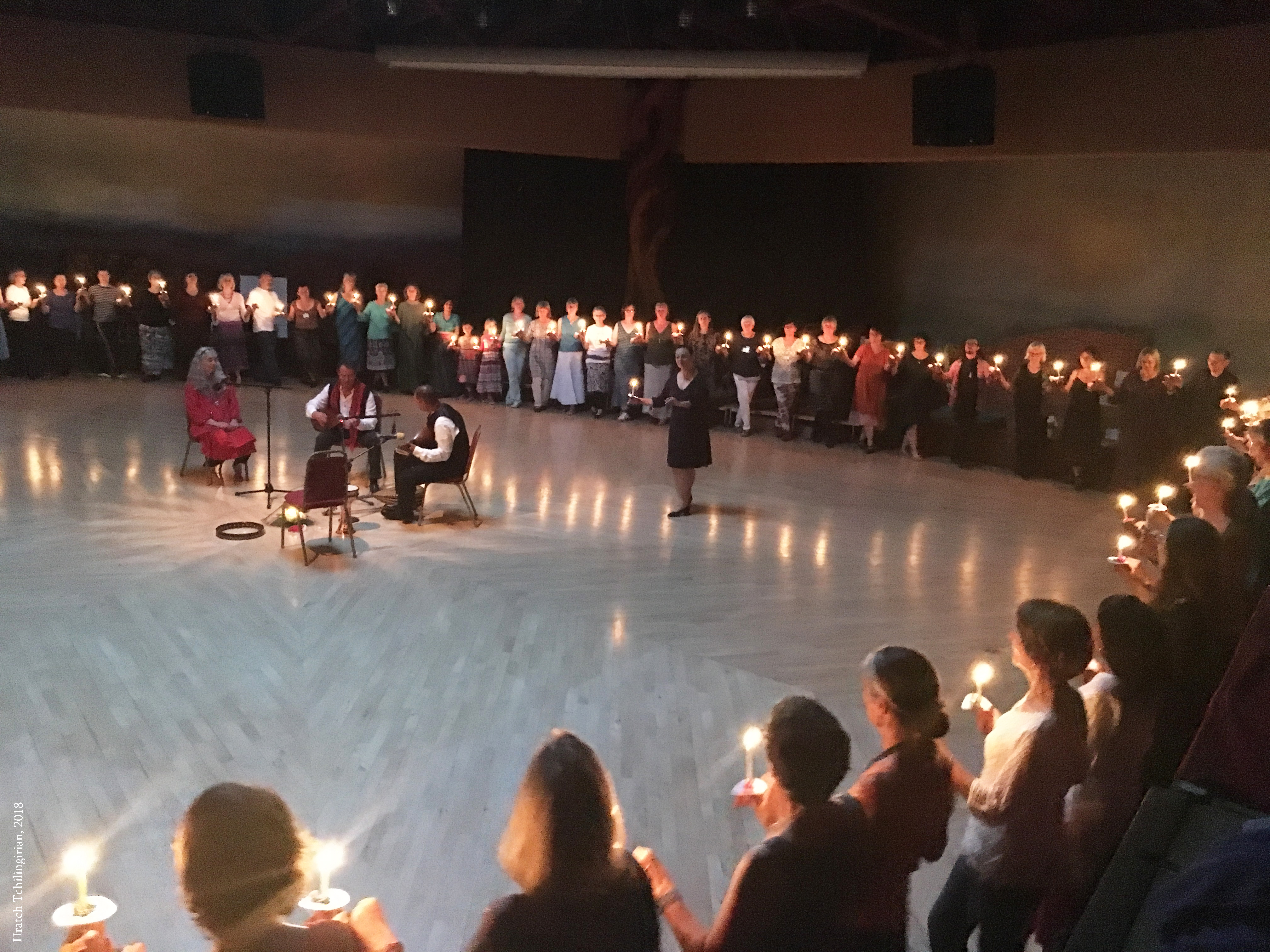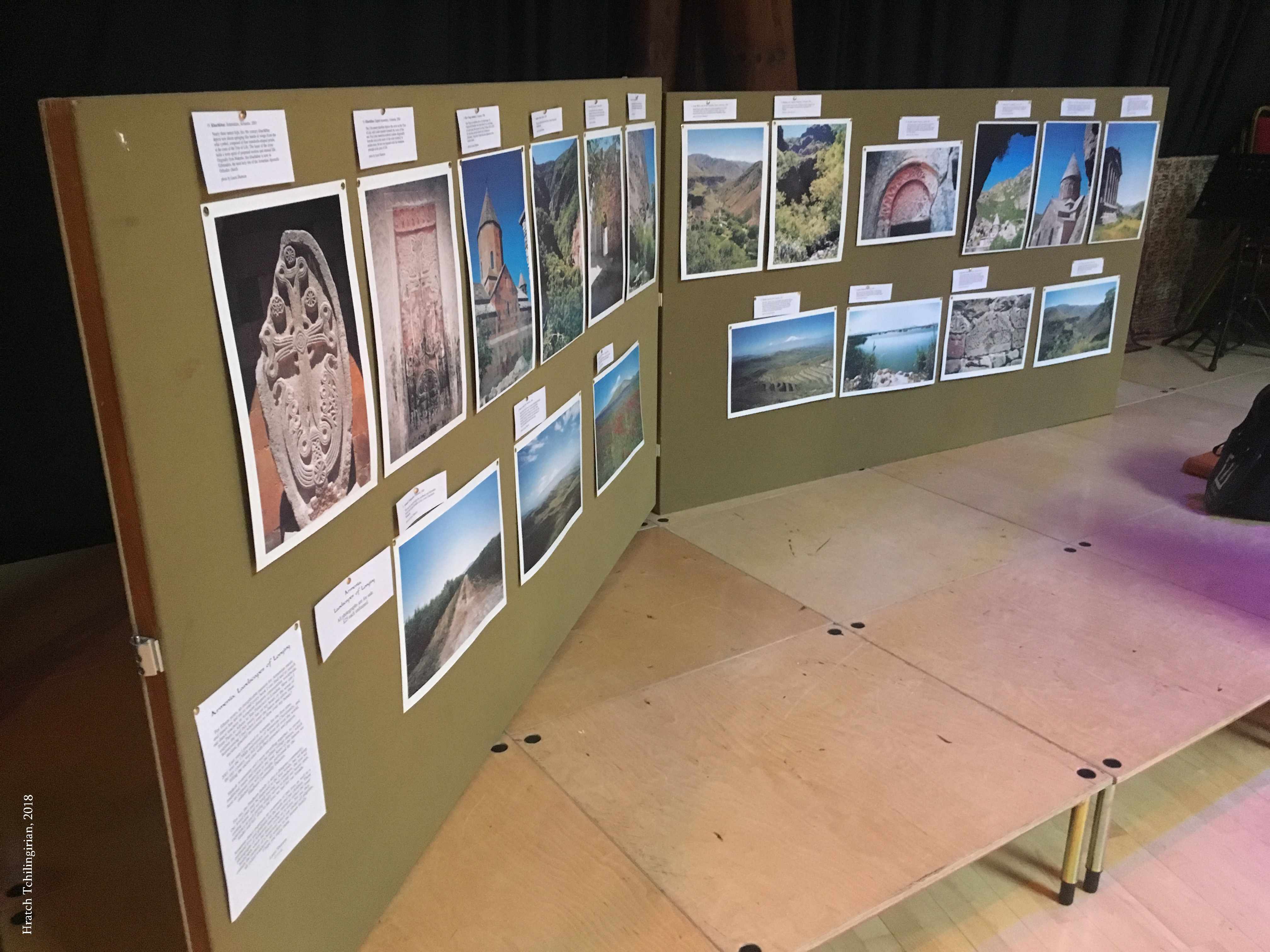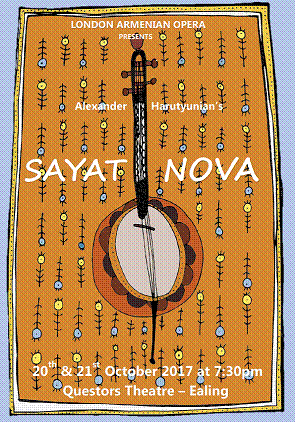e-mail: This email address is being protected from spambots. You need JavaScript enabled to view it.
All rights reserved.
Barekentan Festivities: Living “the good life”
Shakeh Major Tchilingirian | 13.02.2021
In folk culture, Armenians considered Boon Barekentan «տրաքելու օր», “the day to explode” eating, drinking, dancing and partying hard. It is on Sunday, the day before the start of Great Lent, the beginning of forty days of fasting for self-reflection and spiritual purification.
Barekentan festivities are rooted in ancient pagan rituals. The start of a new year (Amanor, Ամանոր), Navasard (Նաւասարդ) and Bareken- tan (Բարեկենդան) were celebrated to mark the sun’s annual journey. Each feast symbolically marked the battle “to save the Cosmos from Chaos”. Barekentan was the victory of Spring over Winter. In anticipation of the vernal equinox, it symbolised the awakening of nature and the arrival of Spring, new life. (1)
Barekentan, literally meaning “good living” (bari gyank), involves series of festivities, which traditionally last for a week or more. In the Armenian Christian tradition, Barekentan exemplifies “the felicity of the paradise and the good life,” writes Patriarch Malachia Ormanian. The Great (Boon) Barekentan (Բուն Բարեկենդան) symbolises “the joyful life of the forebearers of the human race.”(2) Indeed, the liturgical service and hymns in the church on that day juxtapose Adam, “the old man” with Christ, the Saviour, “the new man”, the hope and salvation of humanity.
The festive period concludes on the Sunday before the start of Great Lent, seven weeks before the major feast of the Church, Easter or the Feast of Holy Resurrection (Սուրբ Յարութիւն).
The festivities typically involved large gatherings and celebrations, with festive meals, singing, dancing and entertainment. Oxen, lambs and roosters were slaughtered in preparation for the festivities. Wine and spirits (օղի, oghi) were served abundantly. Popular games for children, young girls, newlywed brides, young men, athletes and horsemen were the highlight of the period. Interestingly, the ancient rites of spring did not have fortune-telling rituals as part of the activities. Ethnographers suggest this is because the change of season at the vernal equinox was not considered threatening—the days were longer and the return of spring was assured.
Invited well-known minstrels and storytellers kept the crowds entertained. The week-long festivities—which paused only during work hours and resumed when the day’s work was completed—intensified as the week progressed, culminating on Boon Barekentan.
Like Mardi Gras and Shrovetide in the Western tradition, during this period families and communities organised banquets, merriment and paid visits to each other’s homes. Even the monks had a break during Barekentan. “Monasteries relaxed their discipline,” writes Ormanian, “giving rise to the term apeghatogh (friar’s holiday, աբեղաթող).”(3) Indeed, as in its European counterpart, the Carnival, “everyday life values were inverted at Barekentan; monks behaved in secular ways, and the highest, most socially prestigious people exchanged places with the lowest in the midst of much buffoonery.”(4) Ethno-choreologist Srbuhi Lisitsyan adds that on apeghatogh days, people in masquerade were allowed to dance in the courtyards of the monasteries without any hindrance. (5)
The dancing in the evenings during this period was typically a combination of community circle dances (հասարակաց, hasarakatz barer), solo dances (մենապարեր, menabarer), dancing in pairs (զուգապարեր, zougaparer), and ‘seated dances’(նստմանց պարեր, nstmantz barer). The zurna (lettish horn) player would typically determine and lead the type, the order, the length and the speed of the dances and everyone would have to follow this order.
On the eve of the final day, as everyone by then was exhausted and satiated with food and drink, the elder of the house—followed by the other members of the family—ate an egg symbolically “sealing” his mouth until Easter. They said to each other: «բերաններս փակում ենք սպիտակ ձվով, Աստված արժանացնի կարմիր ձվով բաց անելու» ("We are sealing our mouths with a white egg; may God make us worthy to open our mouths with a red egg.”) The red egg symbolises new life at Easter.
Notes
1. Hripsime Pikichian, “Festival and Feast” in Levon Abrahamian and Nancy Sweezy (eds.), Armenian Folk Arts, Culture, and Identity. Bloomington, IN: Indiana University Press, p. 220.
2. Malachia Ormanian, A Dictionary of the Armenian Church. (Trans. Bedros Norehad) New York: St. Vartan Press, 1984, p. 26.
3. Ibid.
4. Pikichian, “Festival and Feast,” p. 224.
5. Սրբուհի Լիսիցյան, Հայ ժողովրդի հինավուրց պարերը և թատերական ներկայացումները
(թարգմանություն ռուսերենից. համակարգող և խմբագիր՝ Կարեն Գևորգյան), 1-ին հատոր, Երևան, 2013, էջ 48.
____________________________________________________________________________________________________________________________________________
Youthlink Europe, Venice
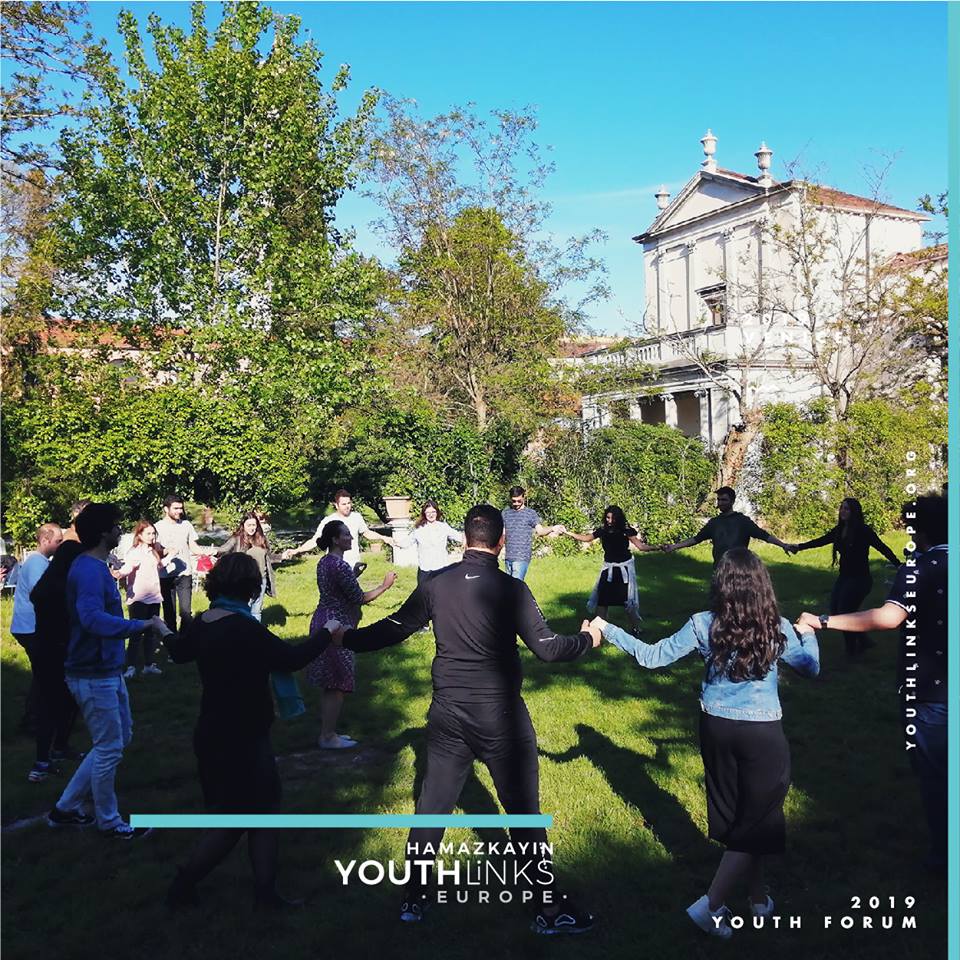
Youthlink Europe, Venice | Համազգային Մշակութային Միութիւն
Shakeh Major Tchilingirian | 01.05.2019
What had initially started as a dance ritual that I created for the centenary of the Armenian Genocide has since become a spiritual journey. It started in London, then took me to Istanbul, Gylling (Denmark), Los Angeles, and many other destinations. This time the journey reached Venice, where I spent a weekend sharing my passion and love for our Armenian dances.
A group of some 30 young students and professionals had gathered for the Hamazkayin Youthlinks Europe in Venice. They had travelled from Lebanon, Syria, France, Germany, Austria, Russia, Italy and Armenia. Hamazkayin had invited me for the second time to be part of this exciting new initiative.
Youthlinks offers an opportunity for young people, aged 18-28, to meet in Venice. Among the many other marvels of Venice, the well known Collegio Moorat Raphael(est. 1836), run by the Mkhitarist Fathers, became our home for the weekend. We also had an opportunity to visit the equally famous monastery of the Mekhitarist Fathers on the island of San Lazzaro, a short boat ride from Venice.
The poignancy of this occasion for me was staying with the youth and the organisers in this historic place, getting to know the participants personally, and imagining how life was for thousands of young Armenian men from around the world who had come to study at this famous Armenian boarding school in one of the most beautiful and cultured cities in the world. Being there offered me an opportunity to hear individual stories of families through the generations and catch an intimate glimpse of what drove these young people. The majority of them not only carry the history that has been passed on to them, but also live the reality of their families, which are full of challenges. Some were from war-torn Syria and Lebanon settling in Europe, embracing the opportunities offered to them and in the knowledge that they were amongst the privileged to have been able to leave. Others have already settled in various countries and are doing exceptionally well. I felt proud for their achievements, but more so for their passion with which they were open to try new things and willing to jump into new opportunities.
The weekend program started with an introduction by the program director Arin Booloozian on the history of Hamazkayin. A group of artists and experts conducted various workshops and sessions, among them Hrag Karakashian, vocalist/guitarist of Garabala; actor and director Vardan Petrosyan, educator Minas Lourian, and Hasmig Chahinian, writer and author of children’s books.
My dance workshop started with a presentation on “Armenian Folk dance: a spiritual journey”. Even as they had danced Armenian dances on many occasions, what was presented in this workshop was something unexpected for most of them — that Armenian folk dance could be “a spiritual journey”. One of the participants said to the others: “I have been dancing these dances all this time without understanding what it was all about. It finally makes sense now. It is as if my soul has taken flight and I feel so grounded and connected.”
We shared many dances — “Komitasi Shoror”, “Gyovnd”, “Papouri”, “Gorani”, “Ishkhanatz Bar” and “Yarkhushta” — in the sun-filled garden surrounded by trees and birds singing. Ringing at regular intervals, the church bells where with us. They did not stop us, on the contrary, they made complete sense in our given space and time.
After dancing for three hours, we moved to the “hearth” of the Collegio for the “Circle of Life” dance ritual, surrounded by majestic pillars and under the gaze of Daniel Varoujan’s portrait. Each participant had meticulously written down on a butterfly- or heart-shaped card where they came from and where their ancestors were from. This was an invitation to remember, honour and celebrate their lives and the fact that their lives were not lost in vain. Here we were alive and dancing.
Yes, it was exhausting, but it was such a privilege to share the lives of the participants. It is a blessing of opportunities, each one singular and never the same. It is a privilege and a blessing to be able to share the depth of emotion with the descendants of a reborn nation, who continue to thrive, grow, develop and, indeed, amaze the world. What a testimony to the strength, values and morals that have been passed on to us.
Շաքէ Չիլինկիրեան | 01.05.2019
Սիրելի մասնակիցներ, ամէն մէկիդ դէմքն ու ոգին սրտիս մէջ է: Ինչքան ուրախ եմ որ մեր գեղեցիկ եւ իմաստալից պարերի ծիսակատարութեամբ, միասնաբար սիրոյ եւ հարազատ կապով մեր «շուրջպարը» հիւսեցինք: Յոյս ունեմ որ այս պարերի ոգին եւ իմաստները շարունակեն ներշնչել եւ հարստացնել ձեր առօրեայ կեանքը եւ մեր մշակոյթի հանդէպ ձեր սէրն ու գուրգուրաքը:
Ինչպէս Դանիէլ Վարուժանը իր «Լոյսը» բանաստեղծութեան մէջ ասում է, երիտասարդութեան այս հաւաքին՝ իւրաքանչիւրս մեր սրտի «դատարկ սափորը» լցրեցինք մեր մշակոյթի «լոյսի աղբիւրէն»: Մաղթում եմ, Վարուժանի եւ մեր մշակոյթի լուսաւոր ջահերով՝ լուսաւորենք իւրաքանչիւրիս առօրեայ կեանքը, հարստացնելով մեր օճախներն ու հաւաքական կեանքը:
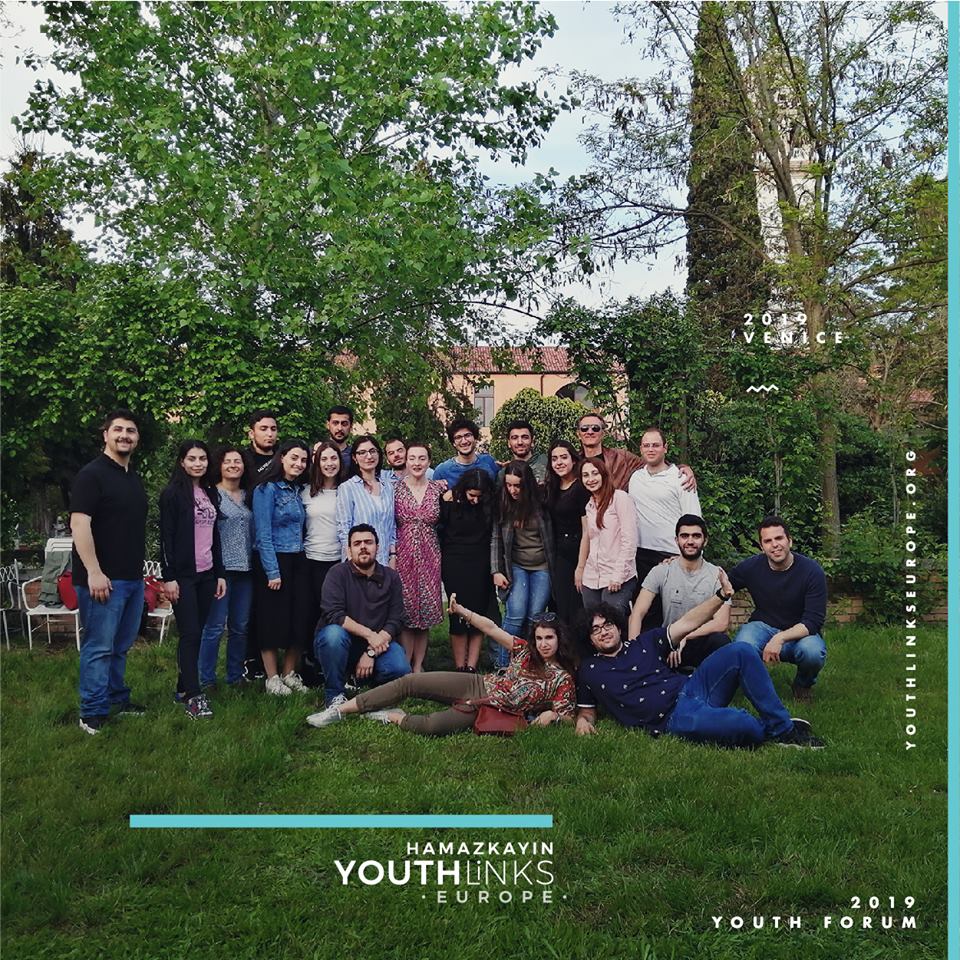
________________________________________________________________________________________________
To Live Is To Dance
Shakeh Major Tchilingirian | 26.07.2018 [video clip]
To live is to dance, to dance is to live. This is my motto. I live and breathe this.
This ‘philosophy’ was confirmed yet again at the Findhorn Festival of Sacred Music, Song and Dance, held in mid-July in Scotland. I have just returned from a truly unforgettable experience of teaching and sharing Armenian sacred folk dances, with all their colours and hues, to over 100 participants during week-long daily workshops.
The participants had taken a leap of faith, travelled from all over the world—from Germany, Austria, Belgium, the Netherlands, Japan, India, Brazil, Argentina, USA, England, Scotland and Wales—and threw themselves into a journey of discovery. Those who have years of experience of coming together in the tradition of circle dancing supported those who were new to this powerful experience.
At the opening session, I spoke of my intention to take everyone with me on a colourful multi-faceted journey of a celebration of life through Armenian dance. I felt like an erupting volcano and couldn’t wait to introduce them to the depth of feelings and connection with a tradition that has lived throughout the ages, with all the ups and downs of life.
Through the dances we connected to an Armenian heritage that has a song and dance for almost every occasion in life, one that enables and allows the coming together and the sharing of a common value system of respect, faith, hope, love and compassion for one another in a closed circle.
The wealth and range of life-affirming and celebrating occasions are many: from a wedding dance, Gyovnd, where the community comes together to support and protect the newlyweds, to a Gorani, where the drums are the very heart beat that connects, sustains, heals and nurtures the community.
The Dabki, danced today by the descendants of the brave Musa Ler people, provided an elevated experience for the group. It was at the conclusion of an afternoon session on Armenian history, culture and identity—presented by my soul mate Hratch Tchilingirian—and my talk on “Armenian Dance: A Spiritual journey.” Without much instruction, we embarked on the journey of the Dabki—where the “heartbeat” of the circle is the davul, the large double-headed drum played with mallets and the soul-awakening sound of the zurna. I was sure at the outset that this would be something special. The drums did their magic. I had so many comments by different participants at various stages in the week on the experience of the Dabki. Indeed, each occasion of dancing is unique; each dance is never danced the same way again; and that’s where the magic lies.
Dancing together for five days was a good opportunity to teach and share a variety of Armenian folk dances, including some of my own choreographies of “Garabneri bar” (Dance of the Swans), “Dou Im Yeghek” ( Reed Dance) and “Gaghardvatz Tzaghikner” (The Enchanted Flowers). Dancing by candlelight in the Universal Hall accompanied by the live, mesmerizing and enchanting music of Kostantis Kourmadias, Nikolas Angelopoulos, Tigran Alexanian and Ara Petrosyan, accompanied by Maya Buckley, was the cherry on the icing.
It was wonderful and spiritually uplifting to take part in the Findhorn Festival of Sacred Music, Dance and Song. I was honored that Anna Barton, the eminent Findhorn Sacred Dance teacher, was not only present, but took part in some of the dancing. As she had explained, “at the Findhorn Foundation, the purpose is to enjoy dancing together in a totally non-competitive way, to learn that it is possible for everyone to dance together, young and old alike, to feel self confident in a group that is supportive rather than critical and to be able to feel a contact with the earth, the spirit and each other through the different qualities of each dance.”
I feel infinitely blessed that my path crossed with Laura Shannon in 1995 and that our dancing journeys and close friendship have blossomed ever since. She also put on a beautiful photographic exhibition of Armenia during the festival in Findhorn, a selection of photos taken during our research and recording trip to Armenia in 2001.
(interview on Armenian folk dance) [video clip]
________________________________________________________________________________________________
"Sayat Nova" in London
Shakeh Major Tchilingirian | 7.10.2017
London Armenian Opera is staging Alexander Harutyunian’s (1920-2012) “Sayat Nova” opera at Questors Theatre on the 20th and 21st October 2017.
Written in 1967, the opera is a musical pastiche based on the songs of the famed Sayat Nova, the 18th c. ashough or troubadour. Harutyunian presents the much-loved minstrel through his intense feelings, enormous musical talent and love for his homeland.
I am very excited about this fifth production of London Armenian Opera. As choreographer and performer, I am fuly enjoying the rehearsals. It is a pleasure meeting and collaborating with talented fellow dancer Fran Mangiascale.
The amazing cast includes the dedicated LAO singers (an extension of my family) with Berj Karazyan, Anais Heghoyan, Aris Nadirian, Arshak Kuzikyan, Stephen Mills and Garo Karabeyekian under the masterful baton of Levon Parikian. Natalia Sookias and Edward Sutton will be working their magic to make this production quite unlike any other ― not going to give away any secrets here.
It is a great pleasure to collaborate again with artistic director Aris Nadirian and director Seta White. The talented duo not only flourish in their individual fields, but also continue to inspire and engage. They facilitate opportunities for enthusiasts to explore Armenian operas with a difference – with a “breath of fresh air.”
When professionals and volunteers ― both from Armenia and the Diaspora ― come together with their passion, talents, dedication and above all love for music and dance, they create something wonderful and magical.
(video clip) ("Sayat Nova" opera)
_______________________________________________________________________________________________

